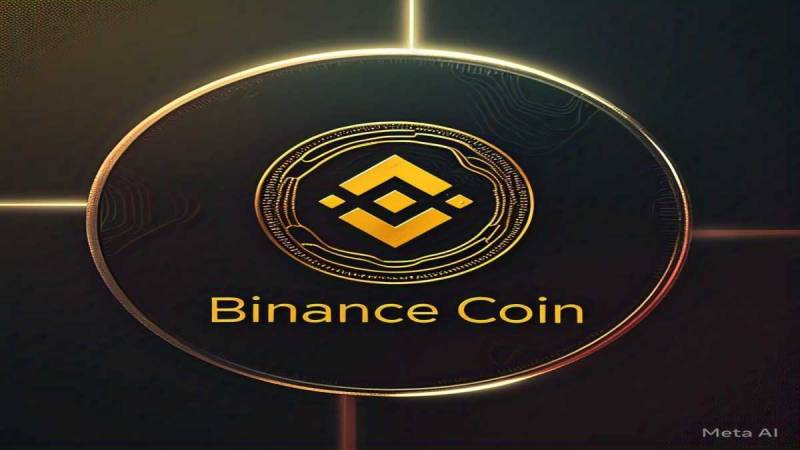 |
|
 |
|
 |
|
 |
|
 |
|
 |
|
 |
|
 |
|
 |
|
 |
|
 |
|
 |
|
 |
|
 |
|
 |
|
Cryptocurrency News Articles
Break the Cycle: Web3 Gaming Reimagined for True Gamers
Mar 27, 2024 at 06:40 pm
The Web3 gaming industry struggles to attract mainstream users due to its focus on financial incentives rather than enjoyable gameplay. Play-to-Earn models prioritize profits over entertainment, leading to unsustainable games. The core audience of successful games are willing to spend money without expecting financial returns, seeking immersive experiences and enjoyable gameplay. For GameFi to thrive, either a Web2-like AAA game needs to integrate cryptocurrency or an innovative on-chain game with a thriving economy emerges. Autonomous Worlds, where all game logic and assets exist on-chain, present a unique opportunity for game innovation and the creation of a shared game universe. In the future, successful Web3 games will align with Web2 counterparts in user experience, with blockchain remaining a background solution for issues like closed code and non-interoperability.

The Future of Web3 Gaming: Breaking the Cycle of Failed Experiments and Heralding a New Era
The prevailing narrative suggests that crypto will revolutionize gaming, transforming it into a lucrative, decentralized playground. However, the reality paints a starkly different picture. Despite the grandiose claims, genuine mainstream Web3 games, where players prioritize gameplay over financial gain, remain elusive. Let's delve into the reasons behind this impasse and explore the factors that will shape the future of Web3 gaming.
Understanding the Current State of GameFi
While many Web3 games have garnered attention, their success is often inflated by deceptive metrics. Data is manipulated by "farmers" and "sybils" who exploit games for profit, not enjoyment. Once yields dwindle, these players vanish, leaving behind a trail of abandoned projects.
Moreover, the majority of these success stories fail to capture the true quality of gameplay. Axie Infinity, once the epitome of Web3 gaming, has witnessed a dramatic decline in daily active users. Its prominence has waned, giving way to a fragmented landscape where no single project dominates.
The Problem with Play-to-Earn and Play-to-Airdrop Models
The core issue plaguing Web3 games lies in their flawed incentive structure. Play-to-Earn games, specifically, are designed around a labor-oriented model, where players view gameplay as a means of financial gain. This approach fosters greed, undermining the fundamental purpose of gaming: entertainment.
The subsequent pivot to Play-to-Airdrop models has further exacerbated the problem. Now, players engage in gameplay solely to qualify for airdrops, without any genuine interest in the game itself. This has resulted in a perverse cycle of short-lived games that wither away after the distribution of tokens.
The True Pillars of Sustainable Gaming
At the heart of successful and enduring gaming ecosystems lies a core user base willing to spend money within the game without expecting direct financial returns. These players prioritize gameplay, seeking immersion, entertainment, and a sense of community that transcends monetary rewards.
This understanding underscores the importance of focusing on creating compelling and engaging gaming experiences that stand on their own merits. Players must be drawn to the game itself, not the promise of financial incentives. This approach has been instrumental in the success of Web2 games for decades, and it remains equally applicable to Web3 games.
The Path to Web3 Gaming Success
The future of Web3 gaming hinges on two distinct paths:
- AAA-Like Web2 Games: The integration of Web3 elements, such as blockchain-based economies and tokenization, into established gaming franchises will likely be a catalyst for mass adoption. By combining high-quality gameplay with crypto functionality, these games can appeal to a broader audience, setting the standard for Web3 gaming.
- Fully On-Chain Autonomous Worlds: A new breed of games, known as Autonomous Worlds, aims to create decentralized, self-governing game universes. By placing all in-game logic, components, and rules on the blockchain, these games enable players to create forks of the game with their own unique rules. Additionally, in-game assets can be wrapped and utilized in other games or DeFi protocols, fostering interoperability and economic growth.
The Rise of Autonomous Worlds
Fully on-chain Autonomous Worlds represent a transformative concept in gaming. They allow for unprecedented levels of player ownership, innovation, and community engagement. While the majority of innovation in this space is currently taking place on Ethereum, the emergence of various Layer 2 solutions holds promise for addressing scalability and efficiency challenges.
Notable Autonomous World projects include:
- Dark Forest: A real-time strategy game where players compete for resources and territories, utilizing ZK-SNARKs for secure coordination.
- The Citadel: A 2D strategy space game where players pilot spaceships, engage in combat, and gather resources.
- Realms: Ethernum: An economic strategy game inspired by Age of Empires and Civilization, featuring a custom game engine built on Starknet.
- Influence: A MMORPG space strategy game where players colonize planets, wage wars, and forge alliances.
- Briq: A block-building adventure game akin to LEGO, where players construct structures from on-chain building blocks.
- OpCraft: A Minecraft-inspired crafting game that serves as a testbed for the Lattice MUD engine designed for on-chain games.
The Future of Web3 Gaming
In the coming years, the Web3 gaming landscape will witness a surge of experimentation and innovation. Speculative capital will undoubtedly play a significant role in shaping these experimental games, but it is ultimately the games that prioritize gameplay over financial gain that will survive and thrive.
Mass-user Web3 games will likely mimic the user experience of Web2 games, with blockchain serving as an underlying layer that resolves issues related to closed code, centralization, and interoperability of in-game items. However, the emergence of Autonomous Worlds presents a novel category of games that may carve out a niche unavailable to Web2 counterparts.
While the future of Web3 gaming holds immense potential, it is essential to temper expectations and focus on building sustainable, player-centric ecosystems. By prioritizing quality gameplay, fostering true ownership, and promoting interoperability, Web3 games can break the cycle of failed experiments and usher in a new era of gaming innovation.
Disclaimer:info@kdj.com
The information provided is not trading advice. kdj.com does not assume any responsibility for any investments made based on the information provided in this article. Cryptocurrencies are highly volatile and it is highly recommended that you invest with caution after thorough research!
If you believe that the content used on this website infringes your copyright, please contact us immediately (info@kdj.com) and we will delete it promptly.
-

-

-

- Custodia Bank and Vantage Bank Launch Avit, the First US Bank-Backed Stablecoin
- Apr 11, 2025 at 07:20 am
- The stablecoin was used in a series of test transactions with a business customer. The pilot included minting, transferring, and redeeming tokens on the Ethereum (ETH) mainnet using the ERC-20 standard.
-

- Investors Embrace Risk Assets as Floki’s DAO Vote Ignites Price Surge, Chainlink Achieves $20 Trillion Milestone, and BNB Forms Bullish Cup-and-Handle Pattern.
- Apr 11, 2025 at 07:20 am
- The cryptocurrency market has commenced the week with a notable surge, fueled by a renewed appetite for risk assets, mirroring the bullish sentiment observed in the stock market.
-

-

-

-

-


















![🐢Super Mario World Koopa Troopa 100% 96⭐️ + Coin [Ao Vivo] 🐢Super Mario World Koopa Troopa 100% 96⭐️ + Coin [Ao Vivo]](/uploads/2025/04/10/cryptocurrencies-news/videos/super-mario-koopa-troopa-coin-ao-vivo/image-1.webp)









































